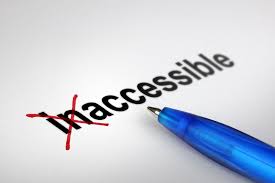Date/Time: Wednesday, January 13, 2021
10:45 am - 12:15 pm
No Registration is required – Use this ConferZoom Meeting Invitation to enter the event waiting room
Facilitators: Leslie Reeves, ARC Universal Design for Learning Coordinator & Alice Dieli, ARC Instructional Development Coordinator
Flex credit: 1.5 hours
Canvas is an accessible platform that includes tools to show us how to ensure that anything we add to Canvas pages is also accessible. We also add Word, PPT, and Google files to our course. Attend this workshop to learn how to use the following tools:
- Canvas Accessibility tool for Canvas pages
- Microsoft Accessibility Checkers for Word and PowerPoint
- Grackle for Google Docs and Slides
- Ally for seeing the status of PDFs
This activity meets ARC Strategic Goal 3 Exemplary Teaching, Learning, and Working Environment and Goal 4 Vibrancy and Resiliency; ARC ISLOs 1, 2, & 5; and State PD Guidelines A, B, & C.
Registration
Registration is closed for this event.
